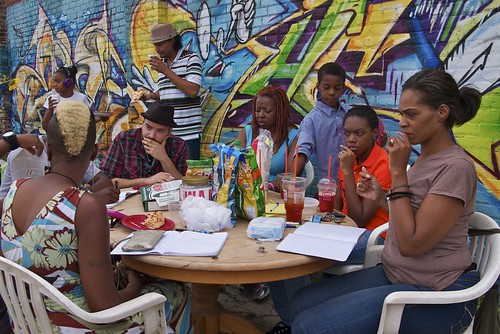by Grace Boey
 Imagine this: someone secretly laces your coffee with meth, every morning, for 28 mornings. Over the first week, you become increasingly hyperactive, and start to bubble with confidence and energy. You feel great, but by day 7, your behaviour starts to get erratic, and you’re irritated with everyone else who can’t keep up. By day 21, you’re having flashes of paranoia, and freak out from time to time because your mind keeps racing, and you’re convinced everyone’s watching you move too fast.
Imagine this: someone secretly laces your coffee with meth, every morning, for 28 mornings. Over the first week, you become increasingly hyperactive, and start to bubble with confidence and energy. You feel great, but by day 7, your behaviour starts to get erratic, and you’re irritated with everyone else who can’t keep up. By day 21, you’re having flashes of paranoia, and freak out from time to time because your mind keeps racing, and you’re convinced everyone’s watching you move too fast.
By day 28, you haven’t slept for a week. You feel invincible, so much so that you decide to take all the drugs you’ve got to see if it will kill you. Because that which doesn’t kill you makes you stronger, right? And if it does kill you, you’ll die feeling amazing… and dying would be such an incredible thing to do. In fact, this had damn well better be fatal. Thanks to the meth and sleep deprivation, you are so confused, irrational and psychotic, that this babbling seems entirely sensible.
Was the suicide attempt ‘your own decision’, in any meaningful sense? Of course it wasn’t. It certainly wasn’t my decision, when those very events happened to me a couple of years ago. The only difference? No one had secretly laced my coffee with drugs (though they might as well have). The terrifying effects were a product of my very first full-blown bipolar manic episode. Thankfully, I survived—although the doctors who treated me assured me I could just as easily not have. I had no clue what was happening at the time; my mania had swept me away, before I even realized anything was amiss.
Despite all this, people like Christian blogger Matt Walsh would say I had committed a “terrible, monstrous atrocity” that was entirely my decision. On August 12, one day after Robin Williams appeared to have killed himself as a result of depression, Walsh published an article with the headline “Robin Williams didn’t die from a disease, he died from his choice.” In it, he claimed that “suicide does not claim anyone against their will”. Depression—and by extension of Walsh’s arguments, all mental illness—is not responsible for suicide: you are. When a huge backlash ensued, he stuck to his guns and wrote a detailed response to his critics.
When I first came across the headline of Walsh's original post, I took a deep breath, read the article, took another deep breath… and read it again. My conclusion at the end of this exercise was the exactly same as my initial response: what a load of exploitative, uninformed rubbish. Walsh's statements reflect deep misconceptions about mental illness, competent decision-making and ‘free will’, which (unfortunately) hinge on the supernatural metaphysics that accompanies Christianity. It angers me that someone like this should feel entitled to piss on the grave of Robin Williams with a headline like that. And personally, as someone who has attempted suicide under the grips of both mania and depression, I am insulted by Walsh's backward ideas.
Read more »
“When you said that the Tree of Knowledge is not an actual tree, didn't you just make up a story that's completely different from the one in the Book of Genesis?”


